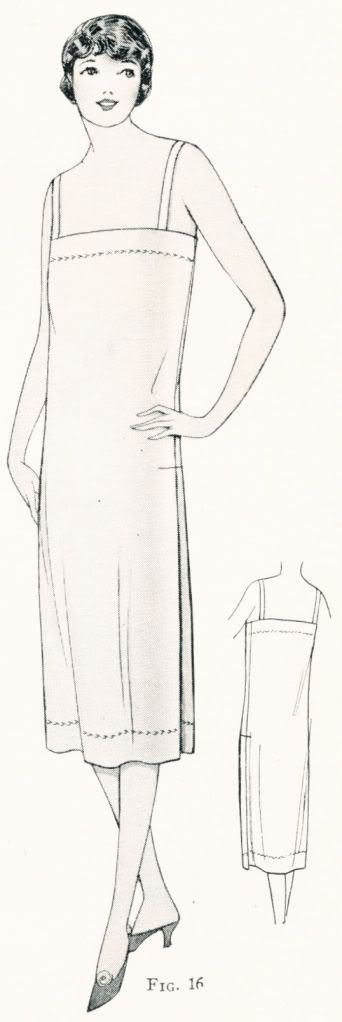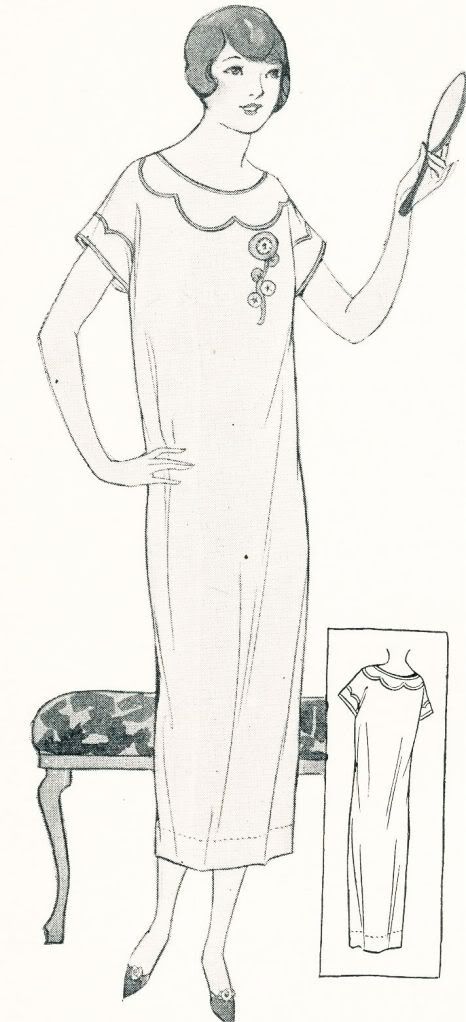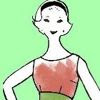I will show a few images and words of wisdom from each of these volumes. This is the first installment.

" To dress well is an art that is acquired chiefly by study. The ability to recognize the small, important things in dress, the patience to exercise care in details, with an appreciative eye for effect, and the ambition to forge ahead by constant thought and application are qualities worthy of cultivation. So long as figures, fashions, fabrics, and individual needs change, just so long will it be necessary to study the art and essentials of dress.
Any woman who is dressed inappropriately or in ill-fitting, badly made clothes loses a great part of her charm; and this fact alone is sufficient reason why no woman should ever allow herself to appear at a disadvantage. Well-fitting, well-made garments of the cheaper materials appropriate for the occasion or the need look far better than ill-fitting, poorly made garments of expensive fabrics."
"The costume slip fills a very important place in the wardrobe, covering, as it does, the need for both petticoat and corset cover. It is simple to make and to wear, may be developed from a minimum of material, and is easv to launder. It may be trimmed as elaborately or as simply as one desires.
The slip shown in Fig. 16, is one of the simplest of these garments as regards both cut and trimming, since it is cut without a pattern and uses only feather-stitching for decoration."
" If, in marking a skirt or slip for yourself, there is no one at hand to aid in marking the length, you may use a yardstick, as shown in Fig. 21 (b), or any straight stick, and mark the length yourself with tailor's chalk.
Stand the stick upright on the floor with one end touching your figure, and make a mark on the skirt at the point on the stick that is in line with your hip line. Then move the stick around the figure, placing marks or pins a few inches apart at this same point. By tying a string around the yardstick at the point at which the chalk marks are made, you will be able to locate it readily when working at the back of the skirt. While the slip is still on the figure, turn the lower edge at the center front to decide on the length. Then remove, and measuring down the same distance from each mark, place pins.
Next, replace the pins along the lower edge with basting, adjusting, the lower edge if it seems uneven. Lay the slip on the table or over the end of a sewing machine or ironing board, and complete the hem"
" Becatise they eliminate the need for an extra pair of straps over the shoulders, short step-ins, such as are illustrated in Fig. 22, have become very popular, particularly for wear with the costume slip. Because they are dainty, easily laundered, and not bunglesome to wear, many women prefer them to bloomers and all other forms of drawers." 
" A nightgown that has the advantages of rapidity of cutting, case of making and distinction of style, is shown in Fig. 23. Its trimming effect, gained by the use of bias binding in harmonizing colors, gives a definite appeal and, because it is so easily applied, adds very little to the time necessary for making the nightgown."
" Simplicity of construction is one of the commendable features of the very attractive drop-shoulder kimono shown in Fig. 27. A without the use of a pattern and in a very short time, you can make a duplicate of this garment which will both fill a real need and provide you with a charming negligee."


i absolutely adore the Women's Institute Dressmaking books. I hope to one day add them to my collection. I actually wish they were still around!
ReplyDeletei also just finished reading the history of underclothes and this ties in nicely! and the illustrations are so nice!
Thanks for sharing!